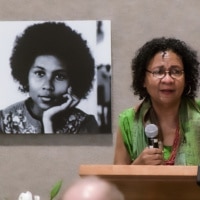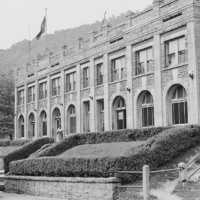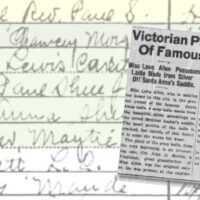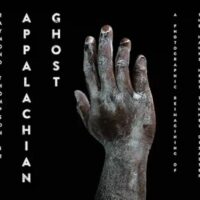Douglass High School, a historic educational institution of Calloway County, does not show up in many official accounts of the past.
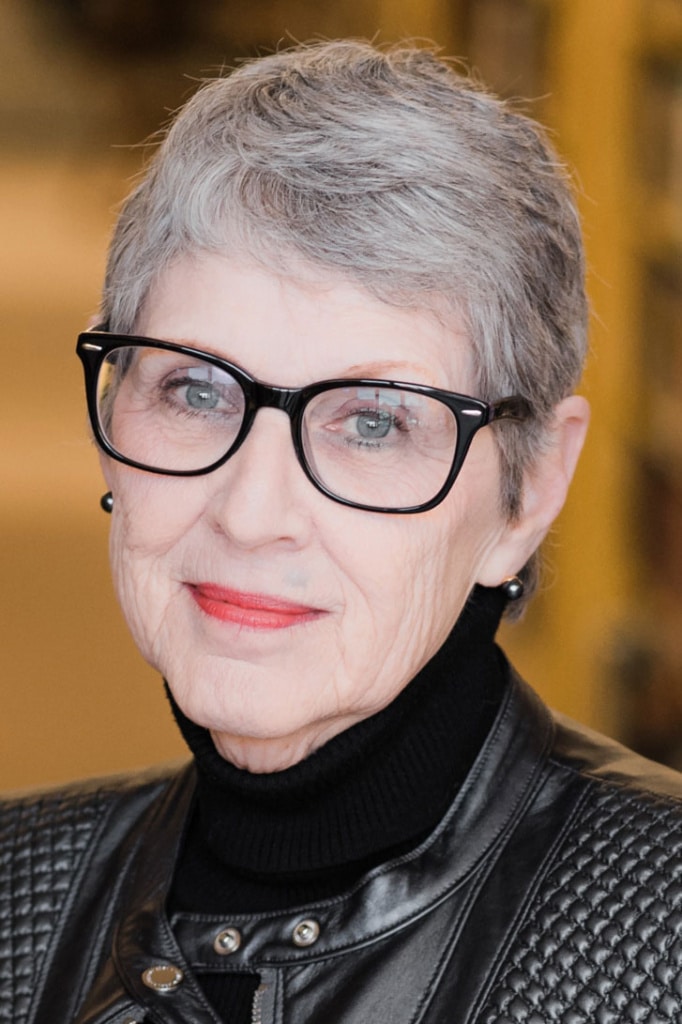
An exception happens every year in early August, when the African American school from the Jim Crow era celebrates its reunion and local media cover the stories. Last year was the 50th, and a committee of devoted alums put together a booklet emblazoned with a crest that said, “Honoring the Past — Inspiring the Future.” There was also an image of a tree laden with blossoming branches, its roots deep and far-reaching.
As pictured on the cover, the exterior of the school was nothing special. There were swings to the left of the entry. To the right was a large tree, similar to the drawing on the crest. Inside those walls, history was in the making. Students of Douglass High were hard-working young men and women who made their marks in academic pursuits, social endeavors, business enterprises, military service, sports, and service to family, church, and community.
One memento from Douglass’ history included in the booklet was an elegant, hand-written letter from Mrs. Bessie Miller, graduate of the class of 1943. It was an invitation to a reunion in 1993.
“There were two girls and four boys in the class,” she wrote, and then went on to name class officers, along with Miss Douglass High.
All the senior boys had the distinction of being members of the West Kentucky All-Conference football team, including Earl D. Hudspeth, an outstanding half-back known as “Jack Rabbit.” After serving in the U.S. Navy like so many young men of the World War II era, Earl came back to Murray and was an assistant coach to L.P. Miller.
The rich cultural heritage of Calloway County’s African American communities gets scant attention from the community at large, so a booklet like the one marking the 50th reunion of Douglass High School is precious.
In addition, Murray State University’s Pogue Library has a series of oral histories, collected through a 1995 project on education and desegregation, featuring four interviewees with roots in Calloway County.
One of them, James Brown, who started school in Calloway County’s New Concord in 1926, was interviewed on October 12, 1995. He remembers the Waters School clearly, as well as a teacher named Blevins. The school itself, he recalled, could accommodate around 40 students, with a minimum of 25 needed to keep the school open.
“Sometimes three or four boys took eighth grade over in order to have twenty-five,” he said.
So much of the daily routine was typical for rural schools of the time. Students studied reading, writing, spelling, arithmetic, and geography. Kids were directed to put math problems on the board. Spelling bees were reserved for Fridays. Sometimes the whole community came to watch, and there were prizes for the winner.
The school was the heart of the community, the place where people gathered for activities like ice cream suppers, baseball games, and other social and sports gatherings. Pie suppers were a favorite. Girls made pies that were put on sale and boys bid on them, often in the hope of beginning a romance.
“We’d pay $8 to $10 for a pie sometimes,” Mr. Brown said, adding that he once recalled a group of boys pooling their money to bid against another guy.
During World War II, James Brown enlisted in the U.S. Army and served for four years. He returned to Murray and was with the Murray City Police for 21 years, retiring as the chief of police. After his first wife Elaine Ahart Brown died in December 1986, he remarried to Odell Brown. He died on March 16, 2002, at Westview Nursing Home in Murray.
The Waters Schoolhouse that he attended, the only remaining one-room school in Calloway County, was eventually moved to Central Park in Murray and renovated. A historical marker was placed in 2006 explaining that the school was named for the first teacher who taught there when it opened in the late 1800s.
There is no mention of one-room schools that served African American communities in Calloway before desegregation, although the Notable Kentucky African Americans Database makes mention of some. Some more research will clarify the omission, so stay tuned to “Main Street.”
James Baldwin — brilliant American novelist, essayist, playwright, and a resounding voice of the civil rights movement — said, “People are trapped in history and history is trapped in them.” With those words in mind, and with February Black History Month, it is time to hear the trapped voices of the past and dig deeper into our roots to inform the future.

